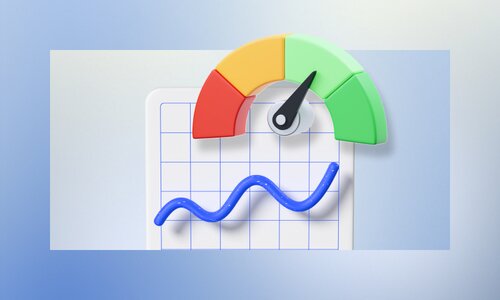You’ve likely heard of the 401(k) Plan for retirement, but what about the 403(b) Plan? If you’re working in the education or nonprofit sector, it’s worth learning about this tax-advantaged retirement savings plan to see if you qualify and if it can help you prepare for your golden years.
Let’s look at the basics of the 403(b) plan and how you can best utilize it for retirement savings.
What is the 403(b) plan?
The Internal Revenue Service (IRS) also calls these a tax-sheltered annuity or TSA. It’s considered to be a tax-advantaged way to grow your nest egg.
It works similarly to a 401(k), but a few key differences set the 403(b) plan apart. For starters, while it’s an eligible employer-sponsored retirement plan, it is only available to employees of public schools and specific nonprofit organizations. Qualified church-affiliated organizations and other tax-exempt 501(c)(3) entities are eligible to operate this retirement savings plan.
So, you enroll in a 403(b) if you are employed as:
- Teacher
- School administrator or supporting employee
- Public college professor
- Cooperative hospital service or USUHS nurse or doctor
- Librarian
- Religious leader such as a pastor or rabbi of a registered 501(c)(3) or a self-employed minister
What kinds of 403(b) plans are available?
Regarding how you’ll contribute, there are two types of 403(b) plans: traditional and Roth.
The traditional plan makes pre-tax contributions. This lowers your present-year taxable income, reducing federal and state income taxes. But, when it’s time to withdraw, you’ll owe income taxes on what you withdraw from your plan.
On the other hand, a Roth 403(b) allows you to pay taxes now and potentially be able to withdraw funds tax-free later on. That’s because your Roth contributions are after-tax or once your federal and state income taxes have been withdrawn from your paycheck. You won’t gain any tax savings in the current year, but your retirement withdrawals won’t be taxed, which could save you thousands in the long run.
Not all employers provide access to both versions of the 403(b), nor are they required to.
How 403(b) plans work
With 403(b) retirement savings, plan participants contribute to the designated account from their paycheck. Employers may also elect to contribute to an employee’s retirement account as part of their benefits package, but this is not required. Any employer contributions can be a lump sum at variable intervals or a matching program.
The IRS has established regulations for 403(b) plans. Participating individual accounts can be established as follows:
- An annuity contract provided through an insurance company
- A custodial account invested in mutual funds
- A specific account for church employees invested in annuities or mutual funds
An employer with a 403(b) employee account must adopt a written program for all tax-sheltered annuity plans. These written programs define enrollment eligibility, rules for employer matching benefits and non-discrimination requirements, limitations, the contracts under the plan, and the benefit distributions.
If your employer offers a 403(b) plan, read the terms and limitations in the written program carefully. You’ll want to pay attention to the timing and form of the benefit distributions. For instance, can you access these funds if you have ended employment or are having a hardship? Does it allow for a plan-to-plan transfer? What is the employer’s right to terminate the plan? Check to see how it handles beneficiaries.
Any 403(b) plan sponsors must extend the option to enroll to all employees inside the organization unless the individuals contribute less than $200 annually, have a 401(k) or 403(b) with another employer, are nonresident aliens, work less than 20 hours a week, or are students under IRC Section 3121(b)(10).
How do contributions and withdrawals work?
The maximum total contributions you can put into a 403(b) plan each year was $22,500 in the 2023 tax year or $30,000 if you were 50 and older. The IRS raises the maximum amount yearly to adjust for rising living costs and inflation. Of course, you don’t have to make the maximum contribution each year. It’s just an option if your income and budget allow for it.
For those 50 or older, there’s an additional catch-up contribution of $7,500 option for 2023. Those individuals could add up to $37,500 to their retirement savings.
There’s also a maximum combined employee/employer contribution limit, which is either 100% of the employee’s most recent yearly salary or $66,000 in 2023, whichever is lesser. So if your annual salary is $75,000, you are 45 years old, and you contribute a maximum of $22,500, your employer can contribute up to $43,500 to the account.
Penalty-free withdrawals are allowed after the age of 59 ½. If you withdraw before this age, you may be subject to early withdrawal penalties.
The accounts have a required minimum distribution (RMD) amount once you reach age 70. How much you’ll be required to withdraw is based on the IRS worksheets. Some designated Roth 403(b) accounts will no longer have a required minimum distribution starting in 2024.
What are the advantages and disadvantages?
The main advantage of a 403(b) plan is the ability to save for retirement with tax-deferred or tax-free contributions. That means you will only owe taxes on that money once you withdraw it, and you’re lowering your annual gross income, reducing your yearly tax burden. Or, in the case of a Roth account, you’ve already paid your taxes, so all distributions are tax-free.
Plus, a 403(b) plan typically has low administration costs and fewer rules, which makes it an attractive retirement savings option for those eligible. But low fees aren’t true across the board, so check with the plan administrator and compare fees with other retirement savings accounts you may be considering.
These plans are exempt from oversight rules stipulated by the Employee Retirement Income Security Act (ERISA), including measures like minimum participation standards and regular statement updates. With other retirement plans, the ERISA may restrict you from participation or establish a non-forfeitable right to benefits until you work for that same employer for a certain length of time. This means the 403(b) can allow for the immediate vesting of funds and to do so over a shorter time frame.
And, once you’ve worked for a specific school system, agency, or nonprofit for 15 years or more, you can contribute an additional $3,000 a year up to a lifetime limit of $15,000. You don’t have to be 50 to do this; just establish 15 years of employment with that eligible employer.
Another advantage is the shorter vesting schedules. Work in the private sector, and you’ll hear about people needing to be employed a specific number of years before they can sign up for the company’s retirement plan or meet years of service benchmark before they are “vested” in the retirement plan. 403(b) plans work differently, enabling immediate vesting. So even if you leave that job after a few years, you can still take the employer-matched funds.
If you are considering investing in private accounts like a 401(k) or an individual retirement account (IRA), the 403(b) either matches or exceeds their IRS-defined contribution limits. In the case of IRAs, their annual contribution limits as of 2023 were restricted to $6,500 for those under 50 and $7,500 for those older. A 403(b) can enable you to save more for retirement and add catch-up contributions even earlier for a more significant nest egg.
Downsides to 403(b) plans
Your investment choices may be more limited than retirement plans like 401(k)s. What kind of investment options are available is first limited by IRS regulations, followed by the plan sponsors’ choices when setting up the plan. Contributors can only select between variable and fixed annuity contracts and the mutual funds inside these plans. Other stocks and REITs are not allowed in a 403(b).
An employer sponsoring a 403(b) plan must also operate and administer it by following its written program to continue providing it to its participants. If they fail to do so, all contracts may lose their tax-deferred status.
And, since 403(b) plans are exempt from ERISA, they are also exempt from non-discrimination testing. This means that highly compensated employees might contribute more than the less-compensated ones and gain more benefits in the long run. It also lacks the same protection from creditors as ERISA-compliant accounts. That doesn’t mean investing in a 403(b) is a bad choice, but you should research how the plan is administered and its oversight before opting in.
Another disadvantage is that if you withdraw before you reach age 59 ½, you’ll be subject to early withdrawal penalties and taxes unless you have a qualifying circumstance, like becoming disabled or leaving an employer after age 55. This includes a 10% tax penalty. However, this disadvantage is the same as with any IRA or 401(k) early withdrawals.
The final word on 403(b) plans
The 403(b) plan can be an ideal retirement savings vehicle for public schools, government agencies, and tax-exempt organizations. Nevertheless, consider the 403(b) plan’s restrictions and disadvantages before investing in one. As with any retirement plan, it’s best to consult an experienced financial advisor for advice tailored to your situation. They can help you determine if a 403(b) is the right option for your retirement.
Are you looking for more ways to generate passive income in retirement? The Arrived Single Family Residential Fund allows anyone to invest on their schedule with one-click diversification.
The opinions expressed in this article are for general informational purposes only and are not intended to provide specific advice or recommendations for any individual or on any specific security or investment product. The views reflected in the commentary are subject to change at any time without notice. View Arrived’s disclaimers.








